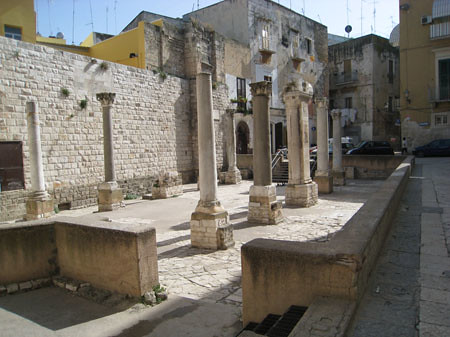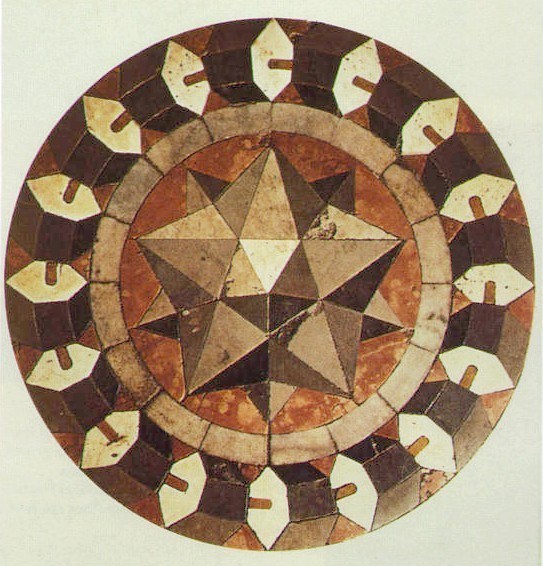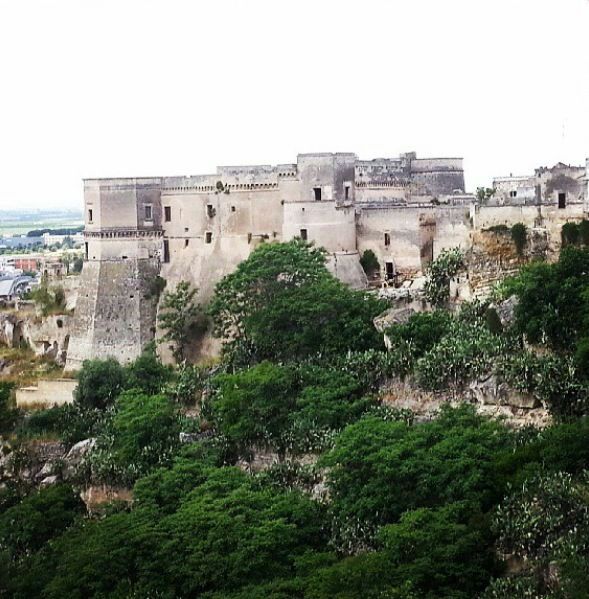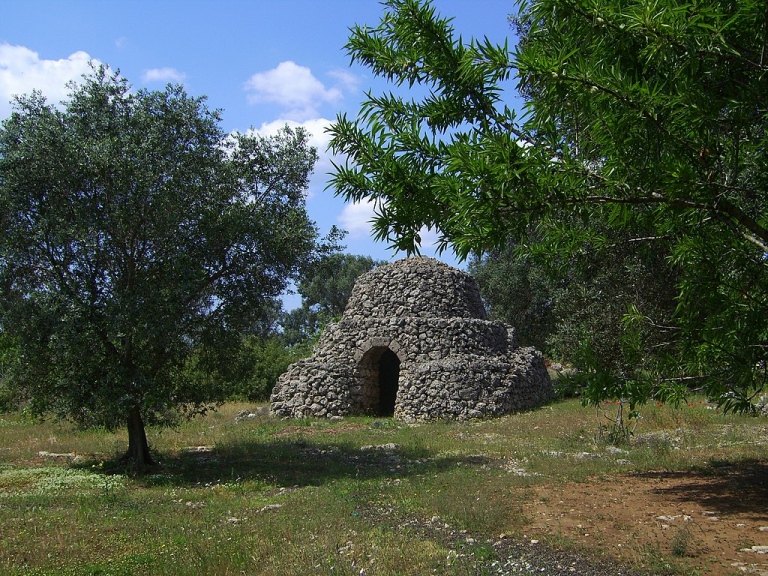Bari, Alberobello, Massafra, Taranto.
Pier Paolo Pasolini went on a journey across Puglia in 1951 and there he wrote a report, published in the Roman newspaper Il Quotidiano in the same year. A more structured publishing project, Le Puglie per il viaggiatore incantato, left unfinished, should have arisen from the notes kept during the journey, which led the writer from Bari to Lower Salento.
In this itinerary we suggest the traveler play the role of a modern and enchanted flâneur and penetrate the streets of Apulian towns, as Pier Paolo Pasolini did in 1951 when he got to Bari by train, a town that was “sconosciuta, distesa contro il mare”.
By walking, Pasolini, as if he fulfilled the legacy of Walter Benjamin – a sophisticated and enchanted city traveler –, became together an archaeologist, a journalist, a director able to get views and angles, and a sociologist who identifies the signs of modernity and the traces of the past that coexist in towns in order to turn them into a narrative.
Pasolini, as a flâneur, is able to interpret a town and turn it into a story: in Le due Bari the light, the porous rocks, and the streets and alleys of the old town become poetry, or in the lyric poem Un biancore di calce viva, he captures pictures and shots of Massafra and other Apulian towns to make them the locations of his masterpiece The Gospel According to St. Matthew.
Hence, our traveler, following in Pasolini’s footsteps, should practice the elegant art of flânerie by poetically going through the towns described by the writer and wandering there to listen to the stories he can tell.

Our journey starts, as in a novel, in a railway station at dusk – the station of a provincial town that might be the same as many others; however, in Pasolini’s view, the arrival at Bari station is a Kafkaesque adventure.
Kafka, ci vuole Kafka. Scendere dal rapido, non potere entrare in città né avanzare di un passo fuori dal viale della stazione, può accadere solo al personaggio di un’avventura kafkiana […], io ero rimasto solo, a tremare, nel piazzale rosso, verde, giallo della stazione: in me lottavano ancora la seduzione dell’avventura e un ultimo residuo di prudenza. (P. P. Pasolini, Le due Bari).
The poet’s feeling of confusion is the same as that the traveler feels when he arrives at the Apulian county town central station and sees an orthogonal grid of streets, resulting from the urban 19th-century restyling project promoted by Gioacchino Murat. The new Bari, developed outside its old Medieval walls, according to the 19th-century aesthetic canons of modern European cities, is an organized series of streets and boulevards that form a geometric grid which is totally different from and almost juxtaposed to the confused Mediterranean pattern made up of alleys and passageways that connote the old town.
A random street should be entered, as Pasolini did: «così senza aver deciso nulla, scelsi una strada, una delle tante, piena di scritte luminose e mi incamminai».
The traveler will be in one of the various bourgeois streets of the Murat district: wide streets that seem «boulevards o avenidas» where «si sente sospesa l’euforia del progresso di questa città che in pochi anni, rotti i legami che imprigionavano i pugliesi con tutti i meridionali a un difficoltoso complesso, ha raggiunto il livello delle città del Nord meno vocate al silenzio». (P. P. Pasolini, Le due Bari)
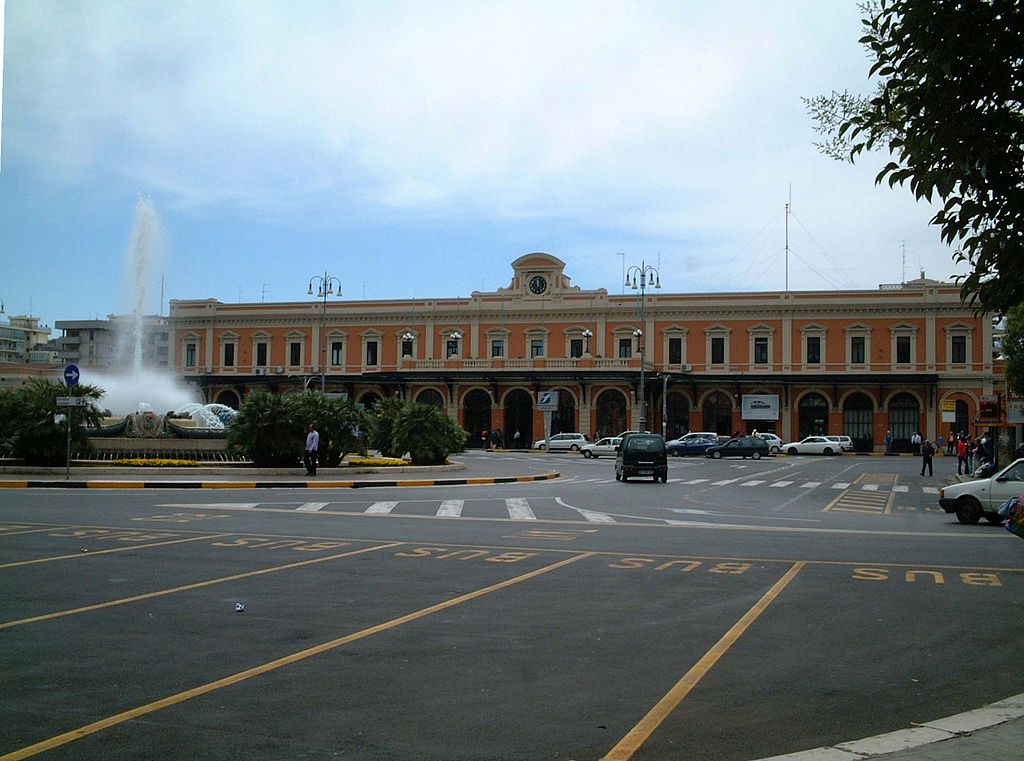
(Foto Di Haragayato – Photo taken by Haragayato using a FinePix40i, and edited., CC BY-SA 2.5, https://commons.wikimedia.org/w/index.php?curid=909819)

Bari, Corso Cavour in a vintage photograph.
Pasolini enters Corso Cavour, a street lined with flowerbeds and now ancient trees, in particular holm oaks, which protect from the heath during summer days and make you enjoy the walk along this boulevard, enlivened by an active social and commercial life. Pasolini writes:
quei salumai, droghieri, farmacisti e macellai aperti alle dieci di sera, e tutta quella luce vuota, sui passanti spinti qua e là in disordine come da un vento di periferia e i gridi dei ragazzi, superstiti nell’alta serata», che catturarono l’attenzione e la curiosità di Pasolini, oggi hanno lasciato il posto a negozi alla moda, gelaterie e ristoranti; permane identico l’andirivieni disordinato della gente e dei giovani che popolano questa strada e le vicine di quella «risonante allegria» di cui «è piena questa città.
In Corso Cavour we can find some of the most beautiful buildings in the new town: the Teatro Petruzzelli, Palazzo Atti, the Bank of Italy and Chamber of Commerce monumental palaces.
Going along the whole street northwards, we get to the sea, where the Teatro Margherita today a contemporary art hub and home to international art shows and exhibitions – stands out at the end of the street in its elegant Stile Liberty shapes.

In the town described by Pasolini and enjoyed by the traveler, the Adriatic Sea is a constant presence and shines with splendor especially in the morning:
Alzato il sipario del buio, la città compare in tutta la sua felicità adriatica.
Senti il mare, il mare, in fondo agli incroci perpendicolari delle strade di questa Torino adolescente: un mare generoso, un dono, non sai se di bellezza o di ricchezza. Davanti al lungomare (splendido), sotto l’orizzonte purissimo, una folla di piccole barche piene di ragazzi (i ragazzi baresi alti e biondi, coi calzoni ostinatamente corti sulla coscia rotonda, la pelle intensa, solidi) si lascia dondolare nel tepore della maretta. Nella luce stupita si incrociano i gridi dei giovani pescatori: e senti che sono gridi di soddisfazione, che il mare dietro la rotonda è colmo di pesciolini trepidi e dorati. E mentre il mare fruscia e ribolle, senti dietro di te con che gioia la città riprende a vivere la nuova mattina! (P. P. Pasolini, Le due Bari)
Hence, we suggest going along the town promenade, Lungomare, in the morning, when the sky and sea colors are reflected into each other. From the Teatro Margherita we go ahead southwards to the town beach called Pane e Pomodoro. The sea always runs along the traveler, lined with a rhythmic sequence of cast iron lampposts that gives a glimpse of the town shapes, those clearly recognizable silhouettes, from the Cathedral bell tower to the monumental fascist buildings.

(foto di Podollo at it.wikipedia, CC BY-SA 3.0, https://commons.wikimedia.org/w/index.php?curid=3689140)
Not far from Piazza IV Novembre, the old dock of Bari opens, called ‘n-dèrr’a la lanze’ in local dialect, i.e. a terra delle lance, with reference to the landing place of the typical small fishing boats, which are still not so different from those that enchanted Pasolini. Here, the traveler – as the poet did – can witness the colored secular ritual occurring every morning: the fish sale on often improvised stalls, the octopus processing and the tasting of raw molluscs, which attracts numbers of tourists and citizens.
Proceeding southwards, the town seems to change: the elegant Stile Liberty buildings and the port vivid colors give way to the ostentatious monumentality of fascist architecture, which restyled this segment of Bari’s coast in the 1920s and 1930s. As a curtain, these buildings of great architectural value concealed the urban area behind, conversely characterized by the crumbling and cheap buildings of popular districts, which still lie behind the Lungomare.
At the end of our walk along the Lungomare, we suggest the “enchanted traveler” visit the Corrado Giaquinto Provincial Picture Gallery, hosted on the last floor of the former Palazzo della Provincia, now home to the Metropolitan City of Bari. It is one of the most representative buildings of fascist architecture in Bari, which eclectically revives, in monumental terms, the Italian civic Renaissance and classical Roman tradition elements. An interesting southern art itinerary winds through the sixteen rooms of the town museum, spanning from the Middle Ages to the twentieth century.
Walking across the town, it will be easy to appreciate the cheerfulness of Bari people. Pasolini is fascinated by the sunny and light-hearted nature of this town and its inhabitants.
[…] i baresi si divertono a vivere: ci si impegnano col cuor leggero, e col cuor leggero vanno discutendo di affari per le strade, prendendo il caffè, si recano a lavoro, senza avere nemmeno il sospetto che questo non rappresenti una piacevole avventura. […] E l’allegria dei baresi è seria, sicura e salubre: su queste teste solide il delicato biondo veneziano dei capelli (che è la carezza dell’Adriatico), perde in languore e acquista in chiarezza. Qui tutto è chiaro: anche la città vecchia, dalla chiesa di San Nicola al castello svevo, pare perennemente pulita e purificata, se non sempre dall’acqua, dalla luce stupenda. (P. P. Pasolini, Le due Bari)
Together with Pasolini, we reached the threshold of the old town, where the poet’s Kafkaesque adventure ends, but our journey does not. In 1964 Pasolini dedicated intense verses to Bari vecchia, and poetry may lead us through these alleys:
Un biancore di calce viva, alto,
– imbiancamento dopo una pestilenza
– che vuol dir quindi salute, e gioiosi
mattini, formicolanti meriggi – è il sole
che mette pasta di luce sulla pasta dell’ombra viva, alonando, in fili
di bianchezza suprema, o coprendo
di bianco ardente il bianco ardente
d’una parete porosa come la pasta del pane
superficie di un medioevo popolare
– Bari vecchia, un alto villaggio
sul mare malato di troppa pace –
un bianco ch’è privilegio e marchio
di umili – eccoli, che, come miseri arabi,
abitanti di antiche ardenti Subtopie,
empiono fondachi di figli, vicoli di nipoti,
interni di stracci, porte di calce viva,
pertugi di tende e di merletto, lastricati
d’acqua odorosi di pesce e piscio
– tutto è pronto per me – ma manca qualcosa.
(P. P. Pasolini, Un biancore di calce viva, in Poesie in forma di rosa)
As you enter Bari vecchia, you feel like being in a white labyrinth of streets and alleys enhanced by sunlight, a maze of houses and white chianche[1] that get tangled up, in a lively town, populated with humble people, poor Arabs, numerous children and grandchildren – as Pasolini wrote.
To get a better picture of the true Bari vecchia, we can follow secondary itineraries in search of the stories and legends in the town alleys, since – as Marco Polo states in Invisible Cities by Calvino – describing the appearance and architecture of a town is not enough to describe the town itself.
We suggest the traveler enter a very typical street, Strada Meraviglia, where there is a balcony over a nice 16th-century arch, the subject of a romantic legend.
The arch is said to have been built in a single night to let two lovers, who lived opposite each other, meet secretly and love until dawn, against the girl’s family wishes. The story of Bari Romeo and Juliet made this part of the town popular, attracting young couples and romantic tourists. Actually, the story of the balcony as a ‘go-between’ seems different. Arches are a very common architectural solution in Bari vecchia – they are at least fifty –, mostly built to create small passages between the town alleys. The one in Strada Meraviglia was built on a previous 13th-century structure and commissioned by the noble family Meravigli or Meraviglia – arrived in Bari within the entourage of Queen Isabella of Aragon – to connect two palaces they owned.
[1] Translator’s Note: Limestone slabs, typical of Apulian architecture. They are used as paving stones or covers for the conical roofs of trulli.

Bari vecchia, Arco Meraviglia
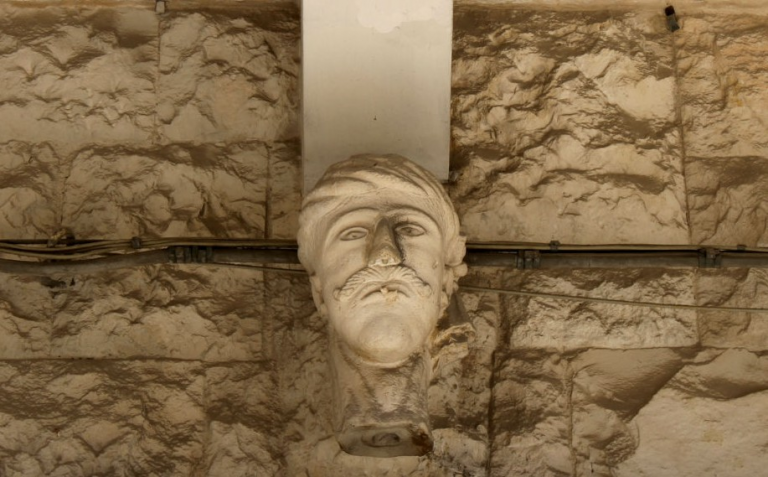
Our itinerary discovering the old town stories leads the “enchanted traveler” to an alley, called Strada Quercia, within walking distance of the Castello Svevo. At number 10 there is a small sculpture, fixed under a balcony, a Moor head, known to local people as the cape du turk. It is an apotropaic mask, which portrays a severed head, with hair in a turban, mustaches and vaguely staring eyes. Although it is a very common decorative motif in Apulian art, which frequently appears in cathedral and castle capitals, in the carved gates of basilicas, and in various liturgical ornaments, a macabre legend arose about this small Bari vecchia sculpture, set in the age when the Arabs ruled the town.
In fact, between 847 and 871 Bari was an Emirate. Although it seems that no traces were left of this short political season, Islamic culture permeated and clearly penetrated the town and the region in pre-Norman times, when Apulia was at the center of a Mediterranean crossroads.
Legend has it that the severed head belonged to Emir Muffarāg, who ruled Bari between 853 and 856 and tried to convert Bari people to Islam. It is said that, on the night of 5 January, in order to show his own courage, the emir decided to face a witch, a legendary creature of Apulian folklore, the dreaded Befanì. She used to wander on Epiphany Eve night, marking the doors of the people close to death and decapitating whoever bumped into her. Such was the destiny of the unlucky emir, whose head remained petrified and fixed to that site.
We can leave this alley and its story behind to discover, together with Pasolini, one of the most typical aspects of the old town and its people «che vive molto all’aperto seduta sulle soglie della casa».
In the old town, life takes place in the street and, almost always, the doors of the houses are open. The white streets, smelling of detergent, host improvised sitting rooms, small craft workbenches, stalls and real kitchens. The alley that opens once you cross the Arco Basso, close to Piazza Federico II, recently renamed Strada delle orecchiette, is today a tourist attraction. Here, Bari women, sitting next to each other on the doorstep, make typical local pasta every day.
Not only is food made and sometimes eaten in the street, but children still play outdoors in Bari vecchia: it is frequent to come across groups of kids who improvise football matches in the paved squares and town alleys.
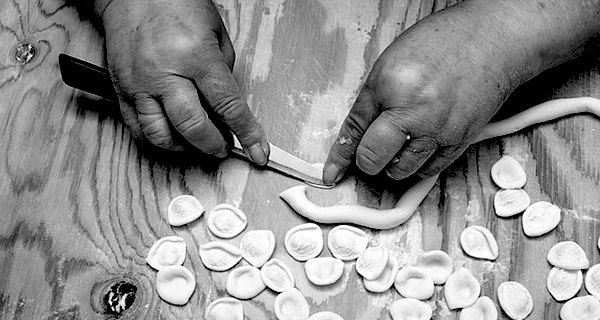
We like imagining that Pasolini, very keen on football and always willing to participate in improvised matches in the street, as his close friend Ninetto Davoli tells, would have enjoyed playing in the square of Santa Maria del Buon Consiglio, where until a few decades ago groups of kids competed and dribbled among the ruins of a 10th-century basilica, avoiding Roman columns.
This square, where even the footballer Antonio Cassano is said to have trained when he was a child, is at the end of the peninsula on which Bari vecchia stands, and is almost concealed among the town streets.
The traveler, going down some steps to fill a gap in height with the road level, will realize not to be in a real square, but to be walking through the nave of a 10th-century basilica, with no roof and side walls. This area is embellished with beautiful marble columns – topped by decorated capitals with plant motifs – lined up in parallel rows and resting on a base that reveals the presence of ancient mosaics.
This church, as the alleys through which this itinerary has led us, has an old story to be told and, after all, it does not matter if it is true or legendary. A bloody conflict is reported, happened in 946, between the Byzantine aristocrats and the people. The inhabitants of Bari gathered in the church – once called S. Maria del Popolo – are said to have set a trap to put an end to the hateful custom allowing the lords to exercise the jus primae noctis over new brides. The plan succeeded and many noblemen died. Hence, the Byzantines in the town gave up ‘taking home’ – as they used to say – newly married girls. Since then, the church has changed its name, with reference to the decision made just within its walls, and is now known as Madonna del Buon Consiglio to the people of Bari.
Let’s leave Bari, with its stories and legends, “una città a cui ci si affeziona”, a town the “enchanted traveler” may leave, but “con la segreta promessa di ritornarci”.
From the Apulian county seat, let’s travel south-west with Pasolini heading towards Alberobello, «forse il capolavoro delle Puglie». (P. P. Pasolini, I nitidi trulli di Alberobello).
During the journey, we may admire the landscape characterized by an intense land color, by dry stone walls and olive trees.
[…] tra Murgia e Adriatico la terra è arancione, un leggero tappeto arancione arabescato da muretti dello stesso colore e da radi boschi di ulivi d’un verde carico, vicino al celeste, tra cui ogni tanto, compare un gregge di pecore color malva. (P.P. Pasolini, I nitidi trulli di Alberobello).
The picturesque Murgia agricultural center we reached following Pasolini was recognized as a World Heritage Site by UNESCO in 1996, thanks to the considerable architectural value of its typical houses: the trulli, which give the town nearly a fairy-tale dimension.

The town of the trulli is connoted by perfect shapes, in Pasolini’s view:
un paese perfetto la cui forma si è fatta stile nel rigore in cui è stata applicata. Dal primo muro all’ultimo, non un corpo estraneo, non un plagio, non una zeppa, non una stonatura. L’ammasso dei trulli nel terreno a saliscendi si profila sereno e puro, venato dalle strette strade pulitissime che fendono la sua architettura grottesca e squisita. […] Ogni tanto nell’infrangibile ordito di questa architettura degna di una fantasia, maniaca e rigorosa – un Paolo Uccello, un Kafka – si apre una frattura dove furoreggia tranquillo il verde smeraldo e l’arancione di un orto. E il cielo…È difficile raccontare la purezza del cielo […] un cielo inesistente, puro connettivo di luce sulle prospettive fantastiche del paese. (P. P. Pasolini, I nitidi trulli di Alberobello).
The trullo, which descends from the typically Mediterranean building technique of the thòlos, with its recognizable truncated cone shape, is a dry-stone dwelling that arises from the peasants’ knowledge and mind. In order to make the area stony limestone soil cultivable, the peasants had to remove the abundant rock layers in soil and decided to use them as building material. Hence, Leonardo Sinisgalli notes, «l’astuzia contadina da un segreto o da un caso trasse una regola. Che per adattarsi alle virtù del materiale riuscì a sottrarsi al rigorismo della geometria». (L. Sinisgalli, Prefazione alla La valle dei trulli di M. Castellano)
The building skill of Alberobello peasants had been admired, about two decades before Pasolini’s Apulian trip, by Tommaso Fiore, an intellectual committed to denouncing the peasants’ miserable life conditions. In his Lettere pugliesi, collected into Popolo di formiche, he writes:
Avrai sentito parlare anche a Torino dei nostri trulli, diamine! Tu però forse non sai che la zona dei trulli ad Alberobello è stata dichiarata monumentale, né più né meno che la passeggiata archeologica di Roma. Ma io ad Alberobello, di memorando, di eccezionale, di veramente monumentale non ci ho trovato che la laboriosità dei contadini e degli agricoltori…(T. Fiore, Un Popolo di formiche)
Tommaso Fiore describes the trulli using these words:
[…] sono minuscole capanne tonde, dal tetto a cono aguzzo, in cui pare non possa entrare se non un popolo di omini, ognuna con un piccolo comignolo ed una finestrella da bambola, e con quella buffa intonacatura sul cono, che è la civetteria della pulizia, e dà l’impressione di un berretto da notte ritto sul cocuzzolo d’un pagliaccio, con anche, per soprammercato, una croce o una stella in fronte, dipinta con calce! (T. Fiore, Un Popolo di formiche)
Pasolini is struck before these strange popular architectural structures:
Di un trullo isolato si potrebbe parlare solo con i termini della cristallografia. Tutti corpi solidi vi sono fusi mostruosamente per dar forma a un corpo nuovo, delicato, leggero. I tetti a punta, di un nero cilestrino, si staccano improvvisi da questa base contorta e armoniosa, per riempire il cielo di magiche punte. (P. P. Pasolini, I nitidi trulli di Alberobello).
Also the modern traveler, reaching Alberobello, has the impression that he is in a timeless place and in a magical dimension, yet these buildings are quite recent and arise not from magic, but from more practical reasons – precisely, from tax reasons. The trulli of the Apulian Murgia are closely linked to the reputation and black legend of Gian Girolamo Acquaviva d’Aragona, Count of Conversano, known as “Guercio di Puglia” (cross-eyed). The dreaded feudal lord, renowned for his lack of scruples and his very ambitious policy, ruled these territories in the seventeenth century on behalf of the Spanish viceroys. Local tradition has it that the count, greedy for profits, contravening the royal prohibition on building new towns, had allowed for the construction of trulli, to better exploit the agricultural resources of those lands and the peasants’ work. They say that during the royal inspections, the Guercio asked to quickly demolish the cones, built with the dry stone technique and thus easy to be dismantled, and to rebuild them once the Spanish ‘tax assessment’ had finished.
Today Alberobello, one of the most popular tourist destinations in Puglia, has lost much of the charm Pasolini noticed. He had the privilege to walk through its main square not yet invaded by tourists eager for kitsch and cheap gadgets now sold at any corner. That is why, here, we suggest the traveler a slight detour. He can find, 5 km north-west, a real treasure of Apulian historic and artistic heritage, the small church of Barsento, which dates back to AD 591.
We may leave the gentle hills of the Murgia and, going through a landscape that seems to slope down slowly in terraces towards the Gulf of Taranto, get to Massafra together with Pasolini:
[…] una città che sorge su un colle spaccato a metà da un torrente. Si immagini una prospettiva del Tevere, la più grandiosa, la più aerea, e, al posto dei palazzi, delle cupole, dei muraglioni – e dell’acqua – un abisso di rocce. Aggrappate a queste rocce, col loro stesso colore, le vecchissime casa di Massafra, spaccata come il colle a metà dalla profonda gola. (P. P. Pasolini, I nitidi trulli di Alberobello)
This characteristic small Apulian town, which will become one of the locations of the film The Gospel According to St. Matthew, is built on the two sides of the deep S. Marco ravine. Three bridges connect the two slopes today, the eastern slope where the new town lies and the western one where the old town stands. In its territory there are various rock settlements and churches, not only shelters for Italo-Greek monastic communities, but signs of a real civilization that had chosen to live in a cave.
The enchanted traveler, following Pasolini, will discover the «puro medioevo» of Massafra, its streets, bridge and fort:
[…] si aggrovigliano, come visceri, i vicoli e le stradine scoscese, attraverso cui si regrediscono fino nel cuore del tempo. Il puro medioevo, intorno. Ti spingi giù verso il basso e arrivi alle mura di un forte, svevo o normanno, puntato come uno sperone verso là dove l’abisso di Massafra si apre sulla pianura sconfinata. (P.P. Pasolini, I nitidi trulli di Alberobello)
The fort the poet refers to is the Castle, reachable through the winding Via Terra, to the left of Piazza Garibaldi. It is a majestic large 16th-century edifice that overlooks the whole village, established on a previous castle dating back to the 10th and 11th centuries. Currently owned by the town council, the castle hosts the Town Library and the Museo storico e archeologico della Civiltà dell’Olio e del Vino (Historical and Archaeological Museum of Oil and Wine).
We invite the traveler to get lost in the alleys of the old town, which «intorno al motivo dell’abisso di rocce che le si apre nel cuore e l’allarga in spazi vuoti e grandiosi, è di una coerenza che fa pensare al rigore dello stile». (P.P. Pasolini, I nitidi trulli di Alberobello)
The modern speculative building has not undermined the pure Midlle Ages of Massafra yet, a place where time seems to stand still. «Il tempo in un dato anno, o secolo, si è fermato, e la città si è serbata fuori di esso, fossile e incorrotta». (P. P. Pasolini, I nitidi trulli di Alberobello)
This dimension of suspended time led Pasolini, after visiting Palestine, to choose this small town, along with other Apulian towns, as a location for one of his masterpieces: The Gospel According to St. Matthew.
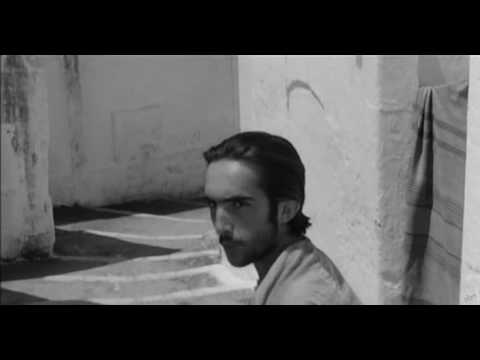
We can leave Massafra with the image of the poetic scenes of The Gospel According to St. Matthew and continue our journey: following La lunga strada di sabbia by Pasolini, we reach Taranto, a city that «brilla su due mari come un gigantesco diamante in frantumi».
Actually the town is located only on the Ionian coast, but two seas and «due lingue di terra, che si protendono […] l’una in direzione dell’altra» – as Guido Piovene wrote in his famous Viaggio in Italia, published in the mid-1950s –, represent the two souls of Taranto.
In fact, the town stands on the innermost point of a spectacular gulf: a part of the urban area develops on the mainland, Taranto nuova; the oldest part – Taranto vecchia – stands on a small island, which looks to the open sea, the Mare Grande, south-west, whereas is reflected in the natural inlet of an inner sea, called the Mar Piccolo, north-east. The two seas are connected only in two points, through the natural channel of Porta Napoli and the artificial and navigable channel that separates the historic urban settlement from the wider and more modern part of the town.
Much has changed since Piovene went to the Ionian city: Taranto is no longer a «città perfetta» (perfect town) and to live there «è come vivere nell’interno di una conchiglia, di un’ostrica aperta»
«Anche nella Lunga strada di sabbia di Pasolini – Alessandro Leogrande recalls – c’è ancora un’Italia del prima. Non è difficile scorgere le tracce di una Taranto che non c’è più, quasi un’altra città su cui ne è stata edificata un’altra, in pochi anni, […]. Le immagini fissate su carta da Pasolini sono le ultime prima della costruzione dell’Italsider; pertanto rileggerle è un po’ come collocarsi dalla parte opposta della parabola», before the town bore the heavy consequences – in terms of health and environmental degradation – of one of the biggest industrial hubs in Europe and of inconsiderate political management that kept the population in check, asking it to barter its own health for work.
On the contrary, Pasolini could admire: «Qui Taranto nuova, là Taranto vecchia, intorno i due mari, e i lungomari. Per i lungomari, nell’acqua ch’è tutto uno squillo, con in fondo delle navi da guerra, inglesi, italiane, americane, sono aggrappati agli splendidi scogli, gli stabilimenti».
The “enchanted traveler”, in search of an authentic Taranto, may find the signs of a town that bet it would come to light from the grey smokes of its chimneys and the efforts to promote cultural renewal aimed at restoring the beauty of this place. Such beauty, rather than lost, is concealed by a fog of indifference: beyond it, the town not only may offer fascinating landscapes, but also reveal its rich cultural heritage and ancient history.
This itinerary can start from Taranto nuova, characterized by an elegant French-style 19th-century plan, and admired also by Guido Piovene, with its «piacevoli strade […] decorate da vetrine di dolci». The writer from Vicenza, who wrote his famous Viaggio in Italia in the mid-1950s, dedicated praising words to the Ionian city:
[…] nonostante i grandi edifici di gusto discutibile del tempo fascista e la loro falsa grandezza, Taranto nuova è amabile, e la sua grazia naturale è più profonda e più forte della retorica […]. Passeggiandovi si hanno frequenti scorci sui due mari. (G. Piovene, Viaggio in Italia)
Going through the beautiful Lungomare Vittorio Emanuele III, which runs along the new town, we may enjoy a delightful view, since «Taranto vive tra i riflessi, in un’atmosfera traslucida adatta a straordinari eventi di luce. La bellezza dei suoi tramonti è luogo comune». (G. Piovene, Viaggio in Italia).
Along this road, brightened up by lush gardens, we come across the ruins of some Roman columns.
Taranto has this characteristic, its past emerges from subsoil: the area now occupied by the new town was a necropolis in ancient times and, over the centuries, it has returned myriad archaeological finds. Those that were not stolen by generations of thieves and grave robbers, have enriched the heritage of one of the most important archaeological museums in Italy, the Marta.
At the end of this walk along the sea, we should cross the ponte girevole – a swing bridge built at the end of the 19th century, which opens in the middle to allow for the passage of industrial vessels – in order to enter the old town, «un monumento per se stessa». Here, the traveler may get lost again in the confused Medieval plot of passageways and alleys already met in Bari vecchia.
Per riparare l’interno della città dagli attacchi nemici, forse dal vento e dal calore, le abitazioni lungo il porto formano un muro ermetico, ed i vicoli aperti perché si possa penetrarvi, molto più stretti delle calli più strette di Venezia, piuttosto che vicoli sono interstizi, fessure tra una casa e l’altra, quasiché fossero tagliate con una lama. La città interna è chiusa come in un guscio d’uovo. […] All’interno del guscio si ha poi una matassa di strade, strette ma pulite ed asciutte secondo il costume pugliese. (G. Piovene, Viaggio in Italia)
The beautiful Castello Aragonese overlooks the old town. It was commissioned by Ferdinand of Aragon between 1481 and 1492 and today it is home to the Italian Navy, which has one of its most important arsenals just in Taranto.
After a visit inside this Renaissance architecture gem, the traveler may proceed with its walk along the shore of the Mar Piccolo, where the typical fishing district extends. Today the town is trying to revive the authentic beauty of this place, partly undermined by wide degradation areas and crumbling buildings. Yet the place preserves a particular decadent charm: walking, it is easy to imagine it as the illustration of «una novella orientale, di quelle dove i pesci parlano e sputano anelli preziosi». (G. Piovene, Viaggio in Italia).
Our itinerary aimed at discovering Puglia as described by Pasolini and the other writers and travelers, who accompanied us with their words, ends her. After this journey we will share with the poet the memory of «Bari, il modello marino di tutte le città» and will have «nella memoria, cattedrali e poveri ragazzi nudi, confuse città pericolanti», and in our eyes the pictures of «una regione che si trasforma, si muove in piccole ondulazioni, si ricopre di ulivi». (P. P. Pasolini, La lunga strada di sabbia)
The enchanted traveler may not follow Pasolini to Greece, where this itinerary would like to lead him. In 1969, the writer had a holiday with the divine Maria Callas, documented only by photographs, on the Onassis family’s private island located off Lefkada and today owned by an anonymous tycoon and thus not open to visitors. It is the island of Skorpios, but this is another story, a story of unfulfilled love and of another journey.




